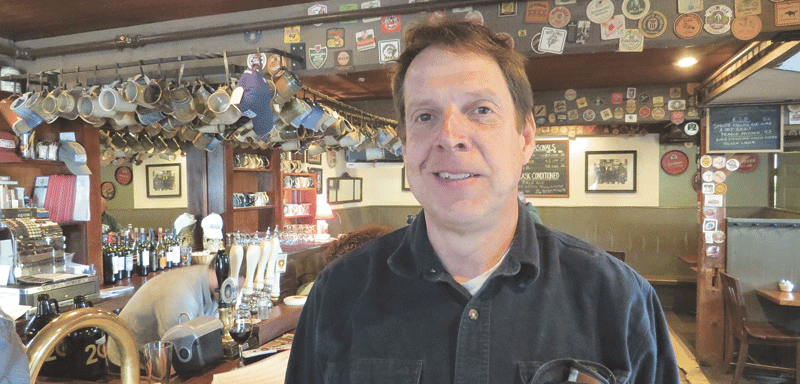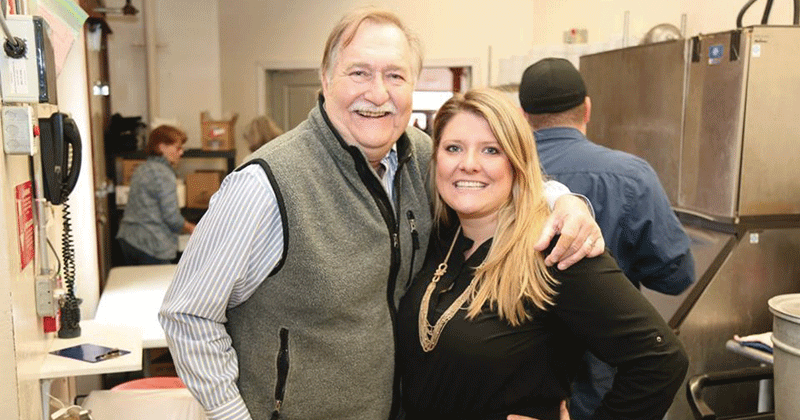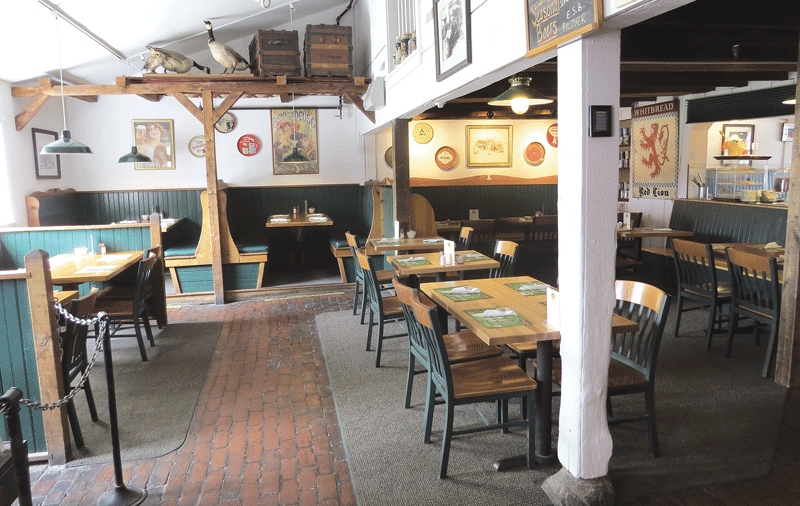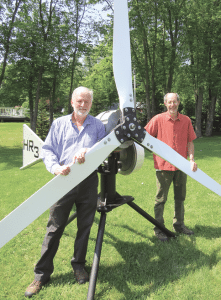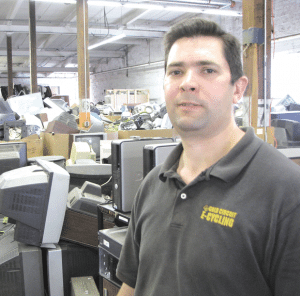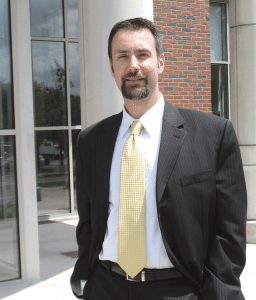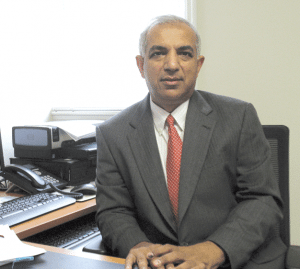Challenge Cup

Chris Tallman, head pro at Cold Spring Country Club, says the PGA Junior League Golf program has helped swell the ranks on the local high-school golf team — and get more families involved in the game.
It was with discernable pride in his voice that Chris Tallman noted that there are 30 members on the Belchertown High School boys golf team.
He said that number slowly and with emphasis, as in 30! And with good reason. That is certainly a large number, especially for a comparatively small school, especially at a time when many larger institutions are struggling to field a team. But also because Tallman, head pro at Cold Spring Country Club in Belchertown, believes he probably had something to do with it.
More specifically, he believes his enthusiastic support of a youth program called the PGA Junior League Golf had something to do with it.
The national initiative, administered by the PGA of America, creates teams of young people at participating clubs that compete against one another. The goals are to have fun, learn the game, make some friends, and maybe get families involved in the sport, as well as young people.
And it seems to be working on all those levels.
“You have 70 to 80 juniors at each match, which is great to see,” Tallman explained. “But looking at the business side of things, if you get the juniors to the course, their parents are going to come, too, and they might get involved in the game.”
Such efforts to grow the sport are certainly necessary at this intriguing and somewhat precarious time for the game — and the business — of golf.
Indeed, those we talked with used a host of synonyms, but mostly ‘flat’ and ‘stagnant,’ to describe both business activity and interest in the game. In short, golf isn’t growing — in fact, it’s probably declining slightly — and many are outwardly skeptical about whether the younger generations will embrace the game with the same vigor as their predecessors.
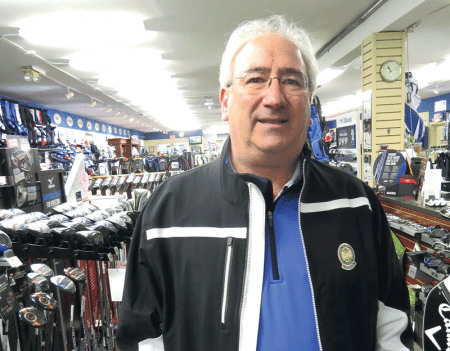
Dave DiRico says young professionals comprise the fastest-growing segment of his business.
Tom Hantke, executive director of the Connecticut PGA, which covers most of Western Mass., used some different numbers to get some important points across.
He said there are roughly 24 million golfers out there, meaning people who are active and play the game regularly. And that number has remained at about the same level for some time now. Meanwhile, there are another 86 million who could — that’s could — perhaps join the core group, with some encouragement and attention.
A problem for the industry, said Hantke, is that many within it continue to focus their efforts on those 24 million in the core group, and not the other 86 million. He puts many club owners and managers in that category, as well as the equipment manufacturers, who continue to focus their energies on those who might buy a $500 driver, a $1,000 set of irons, and a $200 pair of golf shoes, rather than those who might be interested in a starter set or some used clubs.
“The industry gets it backward,” he said. “They’re targeting the 24 million core golfers, or whatever the number is in their respective market. And what they should be doing is marketing toward the 86 million, the ones who want to try the game or be part of the game or be entertained by the game.”
But amid the skepticism and heavy use of ‘flat’ and ‘stagnant’ to describe conditions within the industry, there are some positive signs.
Dave DiRico, owner, with his wife, Joann, of Dave DiRico’s Golf & Racquet in West Springfield, said ‘young people’ — a term he used to describe those in college and their first decade or two out of it — constitute the fastest-growing segment of his customer base. He said many of these individuals played sports in high school and maybe in college, they’re athletic, and they’re looking for a place to park that athleticism and spirit to compete.
And many are choosing golf.
“We’re seeing those people coming in more and more,” said DiRico, now in his sixth year with this venture. “The college kids, they’re buying used equipment to get into the game. And later, when they want to stay in the game, it’s those same people circling back to buy newer sets; the game has got them, and they’re going to continue to play.”
Meanwhile, a host of other initiatives — everything from a campaign to convince players to step up to the tees that suit their age and abilities, not the ones that suit their ego, to a set of proposed new rules changes — are aimed at making the game more fun, less confusing, less penal, and thus more popular.
The question lingering over the industry is whether all these efforts will make a difference at an age when many don’t seem to have the time or inclination for the game.
Since we’ve focused on numbers quite a bit, we might as well keep going and call that the $64,000 question. And for this issue and its focus on sports and leisure, BusinessWest goes about getting some answers.
Round Numbers
Dave Fleury knew he was going to get some heavy flak from his male members. And he was right about that.
But he went ahead with his plan to award a popular, coveted night — Thursday — to a women’s league at Crestview Country Club in Agawam, which he owns, along with Elmcrest Country Club in East Longmeadow. And he’s never regretted that decision; in fact, he did the same at Elmcrest.
He told BusinessWest that, along with young people, women constitute the largest, most potential-laden, but also perhaps the most challenging component of that block of 86 million people who could embrace golf.
Like all the other constituencies, including men, they are challenged by the amount of time and money it takes to play golf, but also its complexity and thick, confusing rule book. What many women who take up the game seem to like about it are the social aspects, he went on, meaning the camaraderie and friendships that result.
Which brings us back to Thursday night.
I really applaud these efforts to change the rules. These are the kinds of things that need to happen to make the game more approachable for women, and for everyone, really.”
For many, that’s a social night, a night out, said Fleury, which is why he awarded it to this women’s league.
“Women really focus on the social side of the game,” he explained. “And for a long time, women’s leagues used to be on Monday afternoon, when the men aren’t playing anyway. We turned that on its ear, giving them Thursday night.
“We took flak for it, but you have to take a stance and make it clear that there’s no reason why women shouldn’t have the same accessibility, the same opportunity to go out and have a good time on a night that makes sense, like Thursday,” he went on. “So now, they come in for cocktails and food after the round and socialize like the men would. And as a result, they can see the game the way men see the game, and golf doesn’t become this drudgery.”
Fluery’s decision on what to do with Thursday night at his clubs is a good example of movement toward giving some thought and attention to those aforementioned 86 million potential golfers out there.
It’s a not a huge step, but an important one, he noted, adding quickly that it’s not going to generate tremendous or immediate improvement when it comes to the big picture. But it’s a step in the right direction, something the game and the industry need many of at this moment.
PGA Junior League Golf is another one, only those involved with it say it has the potential to become huge.
“It’s really cool — the kids have jerseys with numbers on them, so it’s similar to other team sports like soccer and basketball,” he explained. “We’ll play against other teams from other clubs; it’s a fun, laid-back format. There’s not a ton of pressure, the kids are competing against one another, and they’re having fun.”
And, as he noted earlier, the juniors’ parents, grandparents, and friends come out to watch them play, possibly inspiring more interest in the game.
“As a golf professional, my main job is to create more golfers, not just for my facility, but for the game of golf as a whole,” he went on. “And this program is helping clubs do just that.”
E.J. Altobello, head pro at Tekoa Country Club in Westfield, a public course, which hosts several teams, agreed, noting that participation has grown from just over a dozen young people in 2013 to more than 50 last year.
“I value it as one of the best programs they’ve probably ever rolled out,” he said. “It’s definitely piqued more interest in junior golf. The kids get involved, the parents get involved; it’s a good way to get families together on the golf course, just as you would in a Little League game.
“I think the program has gotten more kids in the game, and it’s gotten more families into the game,” he went on, adding that he can see results at his course and on area high-school golf teams. “We have parents now who probably wouldn’t have played ever if their kids hadn’t become involved.”
Green Business
But while the youth program is encouraging, Altobello has real concerns about whether the young people can stay with the game after they’ve graduated from college and the many pressures of life — work, family, and more — take hold.
“I don’t have any trouble getting college kids out here — we have a lot of them come down and play,” said Altobelli, noting that Westfield State University is only about two long par-5s away from Tekoa, and many students walk or even skateboard to the course. “But it’s after college — that’s when we lose them for a bit.
“There are tremendous time and money issues at that point that make it difficult for them to stay in it,” he went on. “But if we give them a good base when they’re juniors, and then increase their play when they’re in their early to mid-20s from two rounds a year to six rounds a year, that’s huge.”
There are many keys to getting young professionals — those in their 20s, 30s, and 40s — involved in golf, said those we spoke with. And they come at different levels, from the individual course to national and even international initiatives.
In that first category, said Fleury, courses have to tailor programs for that specific market. Private or semi-private models (the latter of which is used at both Crestview and Elmcrest) typically enable members to pay only for what they’re going to use, and nothing more.
“If they just want to play golf, they can just join the golf course,” he explained. “They don’t have to pay for the pool or the tennis courts, and we don’t have any food minimums; they just play for golf.”
Meanwhile, all courses can encourage nine-hole play, rather than 18 — a major consideration when everyone seems to be strapped for time and when a round plus lunch at the end absorbs five hours or more, said Fleury, and they can take steps, as he did, to accommodate women and enable them to enjoy the social aspects of the game.
On the national and international front, a broad campaign to convince players to choose the right tees — you might have seen Jack Nicklaus in those TV commercials encouraging people to “play it forward” — is designed to make golf more enjoyable, said DiRico.
“The game was meant to be fun,” he explained. “It’s not fun if you can’t reach many of the par-4s or struggle on the longer par-3s. By playing the right tees, people can relate better to the game they see on TV; they’re on in regulation more often, and they’re putting for more birdies. That makes the game enjoyable.”
And then, there are the rule changes. The U.S. Golf Assoc., working in a joint initiative with the R&A (the ruling body on the other side of the Atlantic), have proposed many of them, all with the twin goals of ‘modernizing’ the rules but also making them easier to understand and apply. The hope is that they also make the game less imposing and more fun.
Players will still have to play the ball as it lies, but there are changes regarding everything from play on the greens (one can leave the flagstick in the hole if they choose and repair spike marks) to taking relief (one could drop the ball from any height, not just from the shoulder, as currently prescribed).
“I really applaud these efforts to change the rules,” said Fleury, also a golf-course designer, who said these changes won’t impact the integrity of the game. “These are the kinds of things that need to happen to make the game more approachable for women, and for everyone, really.
“The game can be quite confusing and seem extremely penal, and sometimes unfairly so,” he went on. “A softening of some of these stringent rules and making them more understandable will help make the game less intimidating.”
Rough Guesses
While it may be some time before those owning and managing golf courses can use words other than ‘flat’ or ‘stagnant’ to describe things within their industry, there are some positive signs and many intriguing steps being taken to grow the game.
All one has to do is look at the Belchertown High boys golf team, for example.
But such efforts won’t change the picture overnight, as Fluery noted, and everyone in this business has to remain focused on both those core 24 million golfers and especially the many more who might take up the game with the right encouragement.
Like the game itself, this is a very stern challenge, but one with some significant rewards.
George O’Brien can be reached at [email protected]






